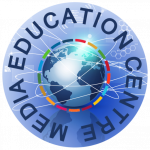Megan McHaney: First-timer in High-level Political Forum
For a first-timer the High-level Political Forum on Sustainable Development can be a bit overwhelming. The politics for CSOs are complex, but the forum also offers vast opportunities from side events to exhibition halls and, of course, to meet new people and connections.
This is my first HLPF, that is, it is my first High-level Political Forum in New York – the highest United Nations’ body monitoring the implementation of Sustainable Development Goals (SDGs). The buzz of the forum is exciting but can also be overwhelming, watching delegations from countries around the world walk through the corridors and into the debating rooms. The politics for civil society organisations to enter these rooms and these discussions is complex. There is a three-tier system of tickets which regulate what seat you can sit in, when you can speak and what you can say.
However, outside the debating chambers the activity and opportunities for organisations are vast. There are side events, exhibition halls, caucuses, two daily briefings to coordinate our activities and messages. And of course, numerous opportunities to meet new people and get connections.
Fortunately, I have been included in the planning and activities of ICAE, one of Bridge 47 project’s global partners. ICAE, the International Council for Adult Education also helps to manage the Education and Academia Stakeholder Group (EASG) which is one of the organisations in HLPF’s Major Group of Stakeholders. This connection has given me access to knowledge and experience about how HLPF works. I have also gotten insights and ideas on how to elevate Bridge 47. This helps to strategize about how to coordinate Bridge 47’s advocacy efforts in preparation for next year’s HLPF, when the SDG 4 on education will be under review.
On the first day of HLPF, I was a speaker and panellist at EASG’s event on Education for Social, Economic and Environmental Sustainability. Other speakers were Katarina Popovic from ICAE and Vernor Muñozfrom Global Campaign for Education. Copies of our presentations can be found here. Vernor spoke about education as a human right and human rights’ centric approach to education: we need to be critical about what type of education and for what purpose. Katarina challenged the basis of SDG 4 being only on formal education. Much more needs to be done on lifelong learning.
I started by framing Global Citizenship Education as underpinning the implementation of sustainable development. “Global Citizenship Education is a framework which, if we use it, can empower us to transform ourselves and our world. Without this transformation the vision of the Sustainable Development Goals will not be realized.” I then went on to outline the aims and activities of Bridge 47.
What is encouraging but also challenging, is that civil society organisations and other HLPF participants are looking to move beyond the SDG rhetoric. Many discussions concentrate on practical solutions or examples of practices that work and can be implemented. This is encouraging as this is a core element of what Bridge 47 can offer to global civil society; examples of innovations, best practices in forming partnerships plus increasing skills and knowledge in advocacy for Global Citizenship Education. But it’s also challenging because there is a lot to do. We need to ensure that Bridge 47 reaches beyond Europe’s shores.
Fortunately, I know that my colleagues and I are up to this challenge. We will take steps towards transforming ourselves and our societies, moving us closer to the vision of the Sustainable Development Goals.
Megan McHaney
The author is the Advocacy Coordinator of Bridge 47 – Building Global Citizenship Project.



